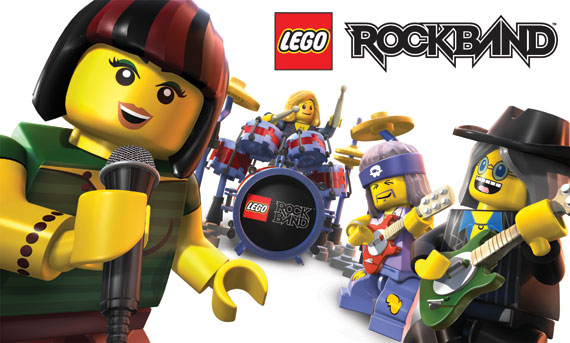
On October 18th, 2011 a new music game was released, although to call it a game might be a disservice. Rocksmith is probably the best way for a beginner to figure out guitar since “Come As You Are” was put into tablature.
For those that haven’t been paying attention, Rocksmith is the first “game” that allows you to plug in any electric guitar (except for Bass) via a 1/4 inch to USB cable into your Xbox 360 or Playstation 3.
Rocksmith is also an affordable substitute for Native Instruments GuitarRig since as you progress through Rocksmith you unlock various pedals to jam out with via Amp Mode.
Baby Steps
The first thing you’ll encounter when you start up Rocksmith is a tutorial (which you can’t skip) that introduces you to the bare necessities of guitar. While I would have appreciated a “do you know how to play guitar already?” option to bypass this, the design decision is clearly put in place to make sure that a novice can’t possibly begin Rocksmith without this basic knowledge.
The tutorial ends with you unknowingly playing the riff to The Rolling Stones “Satisfaction (I Can’t Get No)” which is met with cheers from the video game audience and an achievement/trophy unlocked! The next gig you play will be for a much much smaller crowd: a dingy club called The Mouse Hole where you’ll rock out to “Next Girl” and then try your hand at the full version of “Satisfaction.”
First, however, you’ll have to tune your guitar, and you should get used to this because you’ll be required to do this before playing ANYTHING. Tuning seems to be a major complaint, but a quick muted arpeggio will you get you through it quickly, and almost makes getting through it as fast as possible a game in itself.
Wait what am I looking at here?
Rocksmith is an alternate way of displaying tablature. Imagine you’re looking through the back of your guitar neck and you have the back drop of the Rocksmith interface. At the bottom of the screen you have your guitar strings which are now color coded with:
E – Red
A – Yellow
D – Blue
G – Orange
B – Green
e – Purple
The Guitar Hero aspect is done through the notes floating down the respective frets of your on screen guitar and having you hit them as they hit your strings at the bottom. Most guitars have 22 frets so the fretboard shifts down the “neck” as needed. The area that you will be dealing with for each section of the song will be highlighted in light blue to let you know where your should be keeping your hands.
The notion of the Rocksmith Method being an alternate way of displaying tablature is reinforced by the option to invert the strings to mirror how you would learn a song on a website like ultimate-guitar. Chords are displayed in “windows,” which, when repeated, are notated by lines in the light blue lane following the initial chord. Bends, harmonics, slides, and hammer-ons and pull-offs are also tracked.
There is no failing out in Rocksmith, nor is there a score multiplier factor like Guitar Hero’s Star Power or Rock Band’s Overdrive.
Dynamic Difficulty
One of the points of contention for Rocksmith is its scaling difficulty. When you first play a song, you won’t be playing much of it at all. Once you hit the notes that Rocksmith does give you in succession though, the sections will “level up,” which in turn gives you more notes to play. Rocksmith is clever as it will take note of how well you do and make sure that the next song you play is leveled up accordingly to your “mastery” of the previous songs you’ve played.
Single notes become triplets, triplets become sixteenths, chords appear, solos start sounding more like the actual solo. It’s quite exhilarating when the song you’ve been playing displays it’s first chord and you somehow manage to play it. This aspect of Rocksmith has been lambasted by many “advanced guitarists” because they don’t want to put in the time to play a watered down version of a song. It’s easily solvable by taking the time to master one of the three beginner songs such as: “Go With The Flow,” “Next Girl,” or “I Got Mine.” That will let the game know that you are here to rock and not to learn, although chances are you probably aren’t as good as you think you are.
No, that isn’t a fancy way of typing “FML,” though you will probably think that several times during gameplay.WHERE’S THE METALLICA???
Rocksmith’s track list is certainly a departure from what we have grown accustomed too from the yearly iterations of Guitar Hero. There is a reason for that however: each song on Rocksmith’s disc teaches you a different style of playing or incorporates a new skill. The Horrors’ “Do You Remember” is the song that will introduce you to slides and tremolo picking, Queens of The Stone Age’s “Go With The Flow” will be the first chord strum fest you conquer, The XX’s “Islands” will make sure you learn how to palm mute, and Soundgarden’s “Outshined” will introduce you into the wonders of Drop D tuning. Every song is in there for a reason, and with Sigur Ros, Muse, Radiohead, Clapton, and Red Hot Chili Peppers on the same disc it’s a winner in my book.
Thankfully, for people that aren’t feeling the on disc tracklist, DLC is definitely an option as Ubisoft has already released several tracks, and have set out on a bi-weekly release schedule. Also for those that think everything in this game is far too easy, wait until you unlock the bonus songs via Double Encores.
We’re talking ’bout practice
Rocksmith’s non-metal tracklist might irk the more experienced guitarists, but any competent musician will tell you that everyone should be practicing at least 2 hours a day. Rocksmith ingeniously uses gamification to trick you into practicing techniques like tremolo picking, scales, chord recognition, harmonics, and bends. This is all done through the Guitarcade, which starts off with a simple Space Invaders-like game called “Ducks,” and goes all the way to the most difficult game which has you diffusing a bomb with harmonics called “Harmonically Challenged.”
These “mini-games” are also the only aspect of the game that has score tracking online and a brunt of the on disc achievements/trophies are tied to ridiculous high scores in these games which will motivate you to come back again and again.
Okay, maybe not ANYONE.
Anyone Can Play Guitar
The bottom line with Rocksmith is that this is NOT a party game. The only way this is going to be fun at a party is if your friends are already guitarists and they enjoy playing along to the songs featured in the game or through DLC. Visually the game’s interface is bland, the audience is ghostly and clearly clone stamped, and the “vocal mode” is an afterthought.
The menu system is full of strange design decisions that constantly have you forced into returning to the exact same screen no matter what you’ve picked previously, and the practice mode done through “Riff Repeater” has been given a form of gamification that is not needed whatsoever (lives in practice mode? why?). This is a game where all of the personality is supplied by you and your guitar.
Also, due to the nature of the audio technology, there is 30ms of latency that comes with Rocksmith that will take awhile to get used to, and if you opt to ignore the optimal audio/video setup (as in using an external audio source or bypassing HDMI for your audio) expect to have some audio lag thrown on top of that 30ms of latency. Many reviewers so far have decided to base their final score simply on their unwillingness to modify their “superior entertainment setup” for one game, their loss.
That being said, I have never been this good at guitar before. In my entire laughable foray into the instrument, I have never been able to memorize simple chords like G, D, or Em until now. Something about those colored blocks in a blue window just clicks for me I suppose. Of course, Rocksmith isn’t for everyone, but with each passing day it’s appearing that more and more people are finding out that it is for them. Anyone truly can play guitar; playing well is a different story, but Rocksmith will most definitely get you on your way.
“Rocksmith won’t teach you to play Guitar… But you’ll learn” – Paul Cross (Creative Director)
I’d like to think that we all need to start somewhere, me being a novice with guitar and Ubisoft with their first attempt at bringing music education to your home console. Rocksmith is an impressive effort on Ubisoft’s part, but there’s still room for extra polish and implementation of “user feedback” for Rocksmith 2. Also, how about some Sublime?

